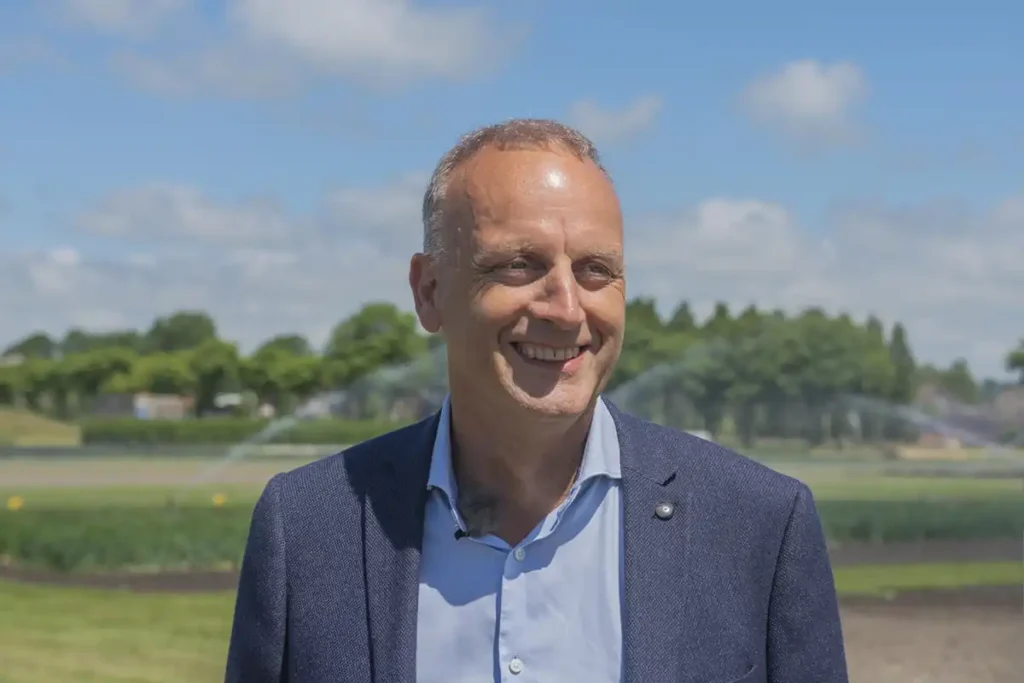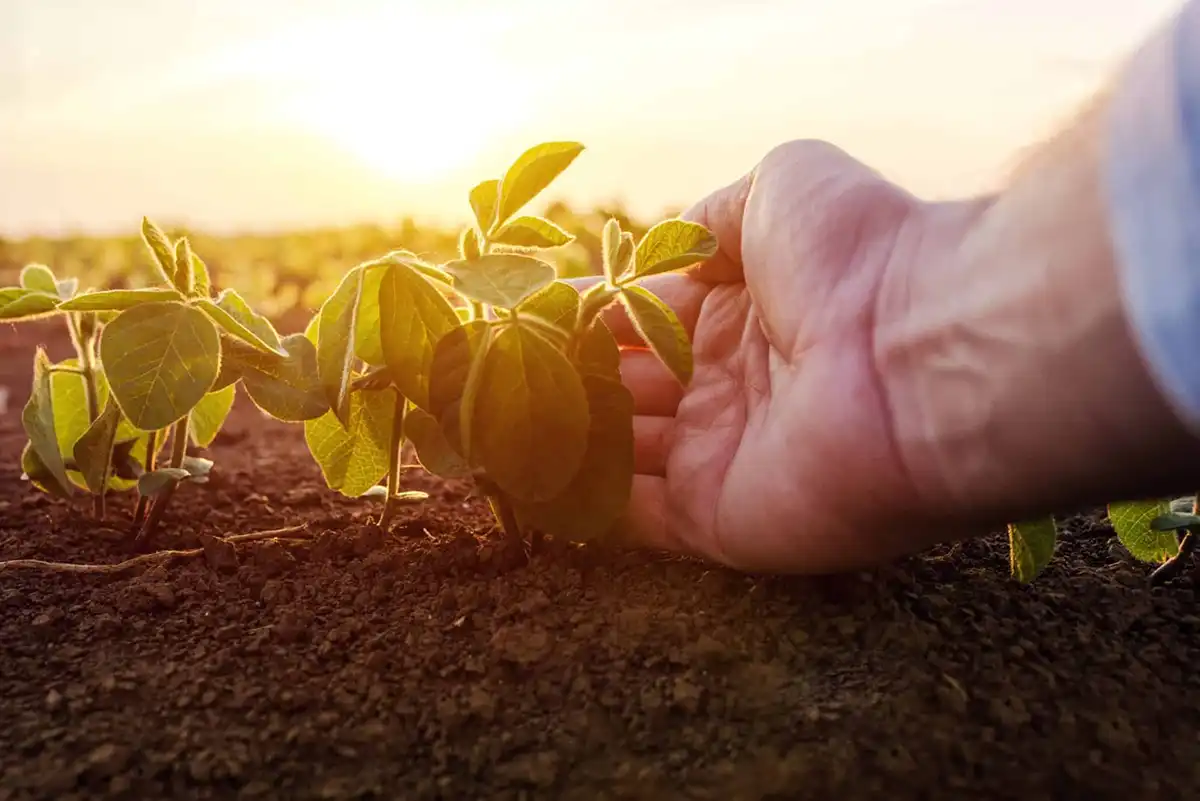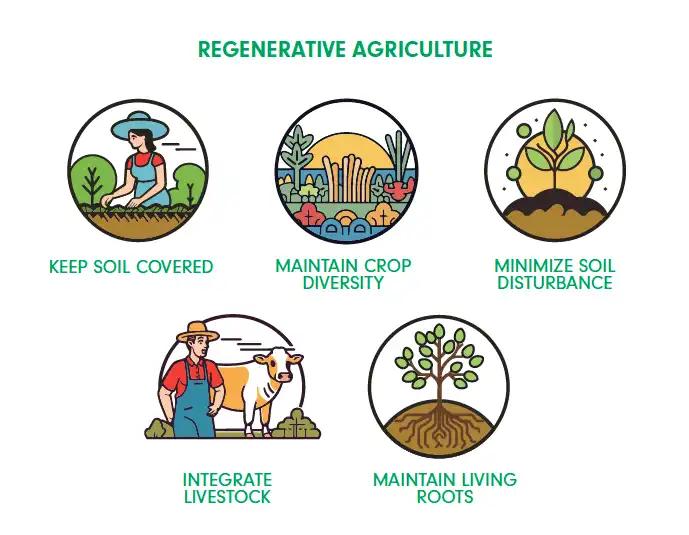A closer look at regenerative agriculture and its benefits to farmers.
WHY IT MATTERS
There’s been a lot of buzz about regenerative agriculture in recent years, with multinational companies such as PepsiCo, Unilever, General Mills and many others all pledging to work hard to establish regenerative agriculture practices in their supply chains. To get an inside look at this phenomenon, Seed World Europe checked in with a wide cross-section of seed value chain experts: Guy Montet, Forage & Cover Crops Technical Development Manager at Lidea; Bruno Hoeltgebaum, Business Director at Incotec; Jason Allerding, Global Head, Sustainability, Health, Safety and Risk Management at Syngenta Seeds; Martin van der Voort, Sales & Marketing Director at Bejo Zaden; Maria Stenull and Lorenzo Carmagnola, Global and European Sustainability Managers, respectively, at BASF; Valentina Manstretta, Horta EU research projects Lead; Imke Hering, Lead Value Offer Development and Markus Molthan, Portfolio Manager Catch Crops at KWS.
In this first part of a two-part series, we look at what regenerative agriculture is, what seed companies are doing towards regenerative agriculture, and how they make sure their practices are a good fit with their intended region.
Seed World Europe (SWE): There is a lot of recent focus on regenerative agriculture. Can you explain in a nutshell what that really means and what some of the benefits are that regenerative agriculture can bring specifically for farmers?
According to Montet, regenerative agriculture is a production model that combines a variety of farming practices with the primary aim of restoring soil fertility. “These practices, which include simplified cultivation techniques, use of cover crops, extended crop rotations, preservation of biodiversity, carbon sequestration and reduction or elimination of the use of plant protection products, are all aimed at improving soil resilience and thus combating climate change more effectively,” he says.

At Bejo Zaden, regenerative agriculture is not a well-defined set of practices, but more a general description of applied farming practices based on improving soil organic carbon and water quality. “The bases of every farm system (soil fertility and water retention) will benefit from this approach. It also fits well in the EU approach to stimulate circular agricultural systems. It is a first start on the path to a higher sustainability level,” says Van der Voort.
“It is all about using inputs and practices in agriculture that will minimize the effect on the environment,” says Hoeltgebaum. Ultimately, his company aims to be fully sustainable and fully biodegradable. “Projects we are working on are the use of renewable energy sources, eliminating residues from seed treatment or foliar application, and supporting technologies on seeds that will require minimum use of synthetic fertilizer, use of biopesticides or as little fungicides, pesticides or herbicides as possible.”
“There are many definitions of regenerative agriculture around, but at Syngenta we like to say regenerative agriculture blends sustainable innovation with tradition, applying an adaptive farming approach supported by proven and science-based practices,” says Allerding.
As the name suggests, regenerative agriculture focuses on the literal regeneration of the soil and of the planet’s ecosystems. Regenerative agriculture improves soil, delivers high productivity and high-quality food, and can help fight climate change and restore lost biodiversity.
“We define it as an outcome-based food production system that nurtures and restores soil health and protects the climate, water resources, and biodiversity while enhancing farms’ productivity and profitability,” Allerding adds.
Regenerative agriculture can enable a sector transformation and support resilient food production.
For Hering, the concept of regenerative agriculture is a rather broad term that is not uniformly defined, and many different methods and approaches can be summarized within it. “With 11 of the 13 most important crops, our company has one of the broadest portfolios in the industry,” Hering says. “This enables a diverse and balanced crop rotation, which we see as an important factor in a sustainable and economically viable cultivation concept. In addition to this, it is also important to make the individual crops and varieties ‘fit’ for future requirements and to consider their overall life cycle.”

For BASF, the key component of regenerative farming practices is that natural resources used in agriculture are not only preserved but also restored, says Carmagnola. An example of regenerative agriculture is achieving an active increase of carbon content in soil to foster productivity and soil health. For arable crops, specific practices would include using cover crops, maintaining plant residues, practicing minimum or no-tillage, implementing long rotations, and adding legumes. Other measures like agroforestry and using decision support systems can also optimize inputs, he adds.
“These practices can maintain or even restore soil and ecosystem health, sequester carbon in the soil, and increase farmland resilience to the increasing effects of climate change,” says Carmagnola. “Regenerative agriculture can improve farmer livelihood through better soil health, increased carbon levels, biodiversity preservation, and decreased erosion risk. Integrated pest management (IPM) and effective crop rotation can optimize inputs while maintaining stable yields and preserving biodiversity.”
SWE: What is your company doing to support, foster or encourage regenerative agriculture?
Incotec focuses on delivering crop input technologies that support healthier soils and lower chemical inputs. The use of seed treatment compared to, for example, foliar or in-furrow pesticide applications is a step forward in sustainability because seed treatment products allow very targeted crop protection delivery.
“We support our customers to allow more sustainable solutions to be optimally applied to seeds,” says Hoeltgebaum.
There’s still room for improvement. For example, the seed sector still needs to address the issue of microplastics in film coats. “We have made a good start here already, with bringing new film coat products on the market as we speak,” says Hoeltgebaum. “Our company aims to realize globally a fully microplastic-free portfolio within the next few years.”
“Our company fully recognizes that regenerative agriculture can improve long-term farmer livelihoods through countless aspects such as better soil health and more soil organic carbon, preserving and increasing biodiversity, and decreasing erosion risk,” says Carmagnola. “All is achieved by cutting GHG emissions, sequestering carbon into the soil, and increasing the resilience of field crop production systems.”
Nevertheless, he also realizes that in the transition, farmers could face some challenges in changing farm management practices, tackling diseases, managing weeds, and responding to unexpected weather events that could undermine productivity and affect profitability. Carmagnola says BASF is committed to helping farmers through these challenges.

Lidea’s support is via seeds. “We are developing a wide range of seeds for farmers. We are a multi-crop seed company promoting genetic diversity,” says Montet. His company offers dozens of different crops, including corn, sunflower, sorghum, and cereals, as well as legumes such as alfalfa, soybean, and chickpea, which are popular for extending crop rotations. “We also propose dozens of forage crops and service plants to provide soil cover, promote biodiversity, and deliver a wide range of ecosystem services,” he adds.
Van der Voort shares that Bejo Zaden’s activities towards regenerative farming are at the moment part of both their sustainability program as well as their organic program.
At KWS, a major focus in their regenerative agriculture efforts is on biologicals. “Our company also develops so-called biologicals as seed coatings, which consist of beneficial microorganisms such as bacteria, fungi, and other substances of natural origin, like plant extracts,” says Molthan. Such biologicals can act as biological crop protection, improve the fixation of nitrogen or solubilization of phosphorus, and promote the root development and germination of the plants. The addition of those supportive biologicals as seed treatments may reduce how much pesticide and mineral fertilizer is required, may contribute to crops’ higher tolerance of abiotic stresses, and may increase the biodiversity of the soil.
Allerding says Syngenta, as a data-science-based company, is continuously strengthening its R&D engine to innovate and orchestrate every process for speed, precision, and power. However, there is no one single prescription that will fit every operation, he adds. “We are driven and focused on holistic innovation around regenerative agriculture cropping systems [to] benefit farmers, consumers, and our planet,” he says. This includes improving seed germplasm’s performance, launching next-generation traits, introducing biological techniques such as seed treatments with biostimulants that enhance soil health, discovering crop protection molecules, developing products that require lower amounts of inputs but bring equal levels of efficacy, and delivering digital solutions, technical advice and training for growers.
“Farmers are the greatest stewards of our land and are already doing so much.… Together, we embrace every opportunity to engage in shared dialogue and learning, listening to understand farmers’ needs, but most importantly working together to incubate and trial to confirm we are bringing valuable solutions to their farms,” Allerding says.

KWS’ Molthan says another important aspect closely connected with the idea of regenerative agriculture and soil health is optimizing soil structure while reducing or avoiding soil tillage measurements. “Catch crops such as oil radish, mustard, and legumes can make an important contribution in this regard,” he says. “Such crops provide good root penetration and increase the humus content of the soil, [and] they help to make the soil more resistant to stress, have better water retention capacity, and less prone to erosion during heavy rainfall.” Moreover, such crops help conserve nutrients from the soil in plants’ biomass, mobilizing nutrients that are difficult to access in the soil and fixing nitrogen from the air with the help of nodule bacteria.
BASF’s Stenull says farmers should be at the centre of agricultural transformation. “They have known their land and their practices for decades or even generations and are the best advocates to preserve their land for future generations.” BASF intends to support farmers who want to integrate regenerative practices by providing innovative crop solutions from seeds to crop protection, as well as decision support systems. She adds that crop-specific multi-year trials are also a key priority for BASF, allowing the company to gain experience in the optimization of agronomic practices and measure the benefits with different in-house tools that can be used to quantify, report, and value the positive impacts in the downstream value chain.
SWE: How do you make sure that your efforts are a good fit with your customers’ regional priorities, perspectives and realities?
Van der Voort shares that all of Bejo Zaden’s sustainable/regenerative/organic activities aim to reduce or even reverse the potential negative effects that conventional agricultural practices can have on the environment (soil, water, biodiversity). “We are conducting all these activities in close cooperation with our customers,” he adds.
BASF conducts regional trials to ensure regenerative efforts suit local conditions. “We established pilot fields in three different cotton-growing regions in Greece: Trikala, Komotini, and Magnesia, which started in 2022 and repeated in 2023,” indicates Carmagnola. Ground truth data as well as remote sensing information were collected to evaluate the soil conditions and the crop growth. Farm gate inputs and farm structural information were systematically recorded to estimate energy balances, carbon footprints, and economic performance.
The comparison of the cotton standard (CSF) and regenerative practices (CSF+) in Greek regions concerning carbon footprint and economic performance was performed with BASF’s sustainability assessment tool, AgBalance, which has also been used to measure carbon sequestration based on IPCC Tier 2 methodology. Its economic and environmental results aim to validate the CSF+ protocol for sustainable cotton production in Greece.
As Incotec is a seed enhancement company with production locations on every continent, “we are the first to acknowledge that every region has their requirements, given the variety of crops and climatological conditions,” says Hoeltgebaum. To make sure that Incotec’s efforts fit the needs of its customers and their locations, he says the company stays in close contact with customers.
Allerding says Syngenta has ongoing regenerative agriculture plots across the globe, from the United States to Israel to the Western Cape, South Africa. “Together with farmers and our partners, we are using these plots to properly design trials in the near future, both for seed production and for commercially available products, all while hoping to share this knowledge and enable farmers to adopt these regenerative ag practices.”
Lidea is another company engaging in intensive trialling to best align with customer needs. “We have an extensive trial network throughout Europe, and this year we are launching an R&D program to measure biomass using satellite remote sensing to observe the development kinetics of our products and confirm their performance,” says Montet.

Horta EU’s Manstretta says opportunity lies ahead. “EU projects like AGRESTIC and PLOUTOS have demonstrated the feasibility of long-term carbon sequestration in regenerative agriculture, leading to perceived benefits by farmers.” Initially, smallholders were interested in carbon credits, but the projects emphasized the agronomic benefits of sustainable cropping systems during farmer training. Pioneer farmers and long-term trials conducted by Horta have shown that regenerative agriculture can positively impact yield, quality, and ecosystems at a reasonable cost when farmers agree to change specific farm management practices.
In Part 2 of this regenerative agriculture series, we will look at some examples of regenerative agricultural practices that the companies have implemented and whether these practices can provide the same yield as conventional agriculture.
Read Hype or Hope? Regenerative Agriculture Under the Magnifying Glass here













